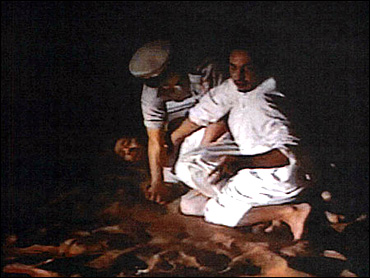Justice for Torture Worldwide. Law, Practice and Agendas for Change
Published By REDRESS October 2013
REDRESS Report forms an integral part of the REDRESS initiative Reparation for Torture: Global Sharing of Expertise, supported by the European Union through the European Instrument for Democracy and Human Rights. The Report brings together the wealth of expertise generated and the experience shared in the course of this work, focusing on comparative law and practice relating to accountability and reparation.
ENFORCEMENT OF UAE JUDGMENTS: TRANSNATIONAL LITIGATION AND ARBITRATION
Help us reach our goals by making a contribution to enforce the UAE Judgment(s)
The petitioner, who is a UAE torture survivor of inside the regime’s brutal prison in Abu Dhabi, United Arab Emirates and most importantly a THREE times of ‘Judgment Creditor’ from the Legal Courts of Abu Dhabi, and still frustrated in the course of enforcing his judgments. He is now aimed to take his case to the next level of courts, the “International Court of Justice and Arbitral Tribunals”.
We need your active support to expose the debtors who hide Judicial decisions, commit fraud and other henious acts to avoid honoring their obligations. …
Please visit “A PORTFOLIO OF UAE JUDGMENTS FOR SALE!??
Introduction
Torture has many faces. It is both secretive and ubiquitous, an intensely personal ordeal and a practice that affects society as a whole. While its particular features frequently have a local imprint, its prevalence is truly worldwide. This double nature is also reflected in global efforts to combat torture. Prevention of, and accountability and reparation for, torture are first sought at the domestic level. Indeed, international human rights law requires victims1 and those acting on their behalf to exhaust domestic remedies first before bringing claims to international bodies.
Advocacy efforts are also often directed at local actors, with a view to changing domestic mindsets and practices. At the same time, these efforts do not take place in isolation. Regional and international fora provide platforms for litigation and advocacy, and cooperation often transcends national and regional boundaries. Yet in practice, it is still rare for those working on torture cases to come together and share their expertise and experience. As a result, national laws and practices, and particularly jurisprudence, often remain little known externally beyond national borders and lawyers and others concerned may be ignorant of precedents, strategies and best practices developed elsewhere that may provide important tools for their daily work.
Relevant actors may also not fully benefit from having links to their counterparts in other countries and regions as networks remain underdeveloped. Victims of torture and ill-treatment The widespread practice of torture has resulted in a large number of victims from diverse backgrounds. While it is difficult to generalise, and therefore correct to say that anyone may become a victim of torture, it is equally clear that certain categories of persons are at a comparatively greater risk.
This applies in particular to those who are considered as an “enemy” of a regime or a particular way of life. Ill-treatment takes myriad forms, as demonstrated by the jurisprudence of courts and human rights treaty bodies, reports and the experience of human rights defenders.84 In addition to custodial issues of long-standing concern, such as poor prison conditions, solitary confinement, and denial of adequate medical care, which were found to be prevalent to varying degrees in all regions,85 there has been an increasing practice of ill-treatment outside the custodial context. This applies in particular to the use of excessive force, and other methods, during demonstrations. In the course of the uprisings in the Arab world, police, security and army forces repeatedly used teargas, birdshot and other weapons.
In Bahrain, for example, protesters were targeted and in several instances deliberately attacked – even though they ostensibly did not pose a security threat – a pattern suggesting that the policing of demonstrations was used as a cover for torture. The Legislative Framework: Making Torture and Ill-Treatment a Criminal Offence Many legal systems are characterised by shortcomings that undermine protection against, and accountability and justice for torture. These shortcomings are often due to the fact that unreformed ordinary legislation, such as criminal laws, does not adequately reflect international standards and best practices. As a result, such laws are ill-suited to address torture-specific concerns. Jurisprudence: Remedies and reparation for torture and ill-treatment While compensation frequently constitutes the primary or even only form of reparation, certain high courts have awarded broader forms of reparation, especially in the context of constitutional remedies. … Download “Full Report“
About REDRESS
REDRESS is a human rights organisation that helps torture survivors obtain justice and reparation. REDRESS works with survivors to help restore their dignity and to make torturers accountable.
 Photograph: Sheikh Issa bin Zayed Al Nahyan & Abu Dhabi Police Torture Guys in the Desert, United Arab Emirates. Video Report
Photograph: Sheikh Issa bin Zayed Al Nahyan & Abu Dhabi Police Torture Guys in the Desert, United Arab Emirates. Video Report

